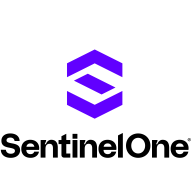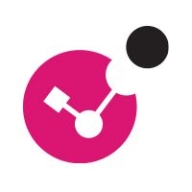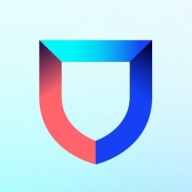


Check Point CloudGuard CNAPP and Lacework FortiCNAPP are key competitors in the cloud security and compliance sector. Check Point CloudGuard CNAPP is known for its unified dashboard and asset management capabilities, while Lacework FortiCNAPP excels in contextual threat detection and compliance monitoring.
Features: Check Point CloudGuard CNAPP offers features such as dynamic access control, compliance checks, and IAM role scanning. Lacework FortiCNAPP provides detailed insights into cloud configurations, anomaly detection, and security compliance monitoring.
Room for Improvement: Check Point CloudGuard CNAPP users look for better rule customization, integration with third-party tools, and clearer documentation. Lacework FortiCNAPP could enhance data visibility, governance, and offer better integration with SIEMs.
Ease of Deployment and Customer Service: Check Point CloudGuard CNAPP is versatile, supporting public, hybrid, and private cloud environments with responsive technical support, though it occasionally experiences delays. Lacework FortiCNAPP focuses on public and hybrid clouds, and receives praise for its responsive and professional service.
Pricing and ROI: Check Point CloudGuard CNAPP is priced based on cloud workloads, sometimes considered costly but with potential ROI through security and efficiency. Lacework FortiCNAPP offers a slightly lower pricing structure, though still viewed as high for large environments, but provides substantial ROI through time savings and risk reduction.
The detailed information PingSafe gives about how to fix vulnerabilities reduces the time spent on remediation by about 70 to 80 percent.
After implementing SentinelOne, it takes about five to seven minutes.
Our ability to get in and review our vulnerability stance, whether daily, monthly, weekly, or whatever it might be, has drastically improved over our prior provider.
Monitoring cloud security automatically ensures a return on investment.
When we send an email, they respond quickly and proactively provide solutions.
They took direct responsibility for the system and could solve queries quickly.
Having a reliable team ready and willing to assist with any issues is essential.
When I need help or have open questions, or if I require the capability to deploy a quick test environment, there are always people I can contact at Check Point to get my information or the environment as fast as I need it.
I have a dedicated support engineer and a presales engineer dedicated to me.
As soon as we need to add somebody, we just add them to NinjaOne, and then we have a script set up where it automatically deploys and adds them to whichever group we need.
I would rate it a 10 out of 10 for scalability.
Scalability is no longer a concern because Cloud Native Security is a fully cloud-based resource.
I never had any performance-related issues.
In my experience, there has been 100 percent uptime.
SentinelOne Singularity Cloud is incredibly reliable.
The cloud console is very resilient.
If there are errors, it is sometimes challenging to elaborate or troubleshoot since it is not transparent enough to understand what to search for.
It is rapidly evolving, and sometimes mistakes occur, necessitating testing.
If I had to ask for anything to make it easier, it would be signed images that are GPG signed and a public repository where we can get the bits from.
If they can merge Kubernetes Security with other modules related to Kubernetes, that would help us to get more modules in the current subscription.
As organizations move to the cloud, a cloud posture management tool that offers complete cloud visibility becomes crucial for maintaining compliance.
I need more integration from the code-to-cloud principle.
It would be nice to have periodic updates on what people should do, maybe with some analysis or something.
I require consistency in the user interface to ensure everything is streamlined into the same look and feel.
With very little negotiation involved, we just let them know what we could pay and they were willing to meet us at slightly above what we paid with Sophos, which was still very fair for what we were looking at.
The price was very, very important to us, and it came down to the price when we were doing our evaluations WatchGuard and SentinelOne.
Covering our 50,000 endpoints would have nearly bankrupted most security programs, even well-funded ones like ours.
It is not cheap, of course, yet it is a necessity.
From a licensing and cost perspective, it is really competitive.
The real-time detection and response capabilities of SentinelOne Singularity Cloud impressive because it is a platform that uses artificial intelligence to determine what is normal and what is abnormal and can lock down any virus it may encounter.
We were shown how ransomware can be immediately stopped in real-time. That was huge.
Our previous product took a lot of man hours to manage. Once we got Singularity Cloud Workload Security, it freed up our time to work on other tasks.
One of the main reasons we use the solution is that it is great at identifying risks that are critical to our business.
The CDR helps detect anomalous behavior and respond to threats before they become an issue.
Detecting misconfigurations in the cloud is what the CSPM delivers.



SentinelOne Singularity Cloud Security protects cloud workloads, offering advanced threat detection and automated response. It integrates seamlessly with cloud environments and secures containerized applications and virtual machines against vulnerabilities.
SentinelOne Singularity Cloud Security is renowned for its efficiency in mitigating threats in real-time. The platform integrates effortlessly with existing cloud environments, ensuring robust cloud security management with minimal manual intervention. Securing containerized applications and virtual machines, it excels in threat intelligence and endpoint protection. However, improvements are needed in performance during high workload periods, and more integrations with third-party tools and better documentation would be beneficial. Users often find the installation process complex, support response times slow, and the dashboard's navigation unintuitive.
What are the key features of SentinelOne Singularity Cloud Security?In specific industries, SentinelOne Singularity Cloud Security is implemented to safeguard critical data and infrastructure. Organizations in finance, healthcare, and technology depend on its real-time threat detection and automated response to protect sensitive information. Its ability to secure containerized applications and virtual machines is particularly valuable in dynamic environments where rapid scaling is necessary.
Check Point CloudGuard CNAPP is a cloud-native application protection platform designed to secure your cloud environments and applications. By combining CSPM, CWPP, CSNS, and WAF capabilities, it provides a comprehensive solution to protect your cloud environment from a wide range of threats.
CloudGuard CNAPP delivers end-to-end cloud security, including workload protection, vulnerability management, and identity management, all while maintaining continuous compliance. It uses advanced AI to detect and prevent threats, offering protection for containers, serverless applications, and APIs. CloudGuard CNAPP also emphasizes simplifying security management, integrating directly with cloud platforms like AWS, Azure, and GCP.
CloudGuard CNAPP provides customers with more context to drive actionable security and smarter prevention, from code-to-cloud, across the application lifecycle. More Context Means Actionable Security, Smarter Prevention. The primary components are:
What are the key features of CloudGuard CNAPP?
What are the key benefits to consider?
Check Point CloudGuard CNAPP simplifies cloud security management with integrated protection and automation.
Lacework FortiCNAPP provides robust cloud security, combining vulnerability management and multi-cloud insight with user-friendly controls, machine learning detection, and compliance support.
Lacework FortiCNAPP specializes in cloud security by merging machine learning anomaly detection with agent-based vulnerability management to offer detailed alerts and compliance reports. Its comprehensive approach allows continuous monitoring across AWS and Kubernetes, providing insights from an attacker's perspective. The platform offers automation and seamless Slack integration, facilitating collaborative and efficient cloud security management. Users value its ability to handle multi-cloud environments and scan IAC scripts, configurations, and compute nodes across AWS and GCP.
What are the key features?Organizations across sectors leverage Lacework FortiCNAPP for cloud security, focusing on compliance, security posture, and vulnerability management. It is widely used for monitoring AWS and Kubernetes environments, scanning IAC scripts, configurations, and securing compute nodes. It supports multi-cloud security posture management and log ingestion, enabling companies to maintain strong cloud infrastructures without dedicated security layers.
We monitor all Vulnerability Management reviews to prevent fraudulent reviews and keep review quality high. We do not post reviews by company employees or direct competitors. We validate each review for authenticity via cross-reference with LinkedIn, and personal follow-up with the reviewer when necessary.